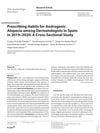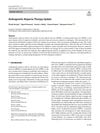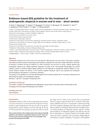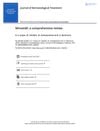37 year old. 6 months Dutasteride (0.5) and Oral Minoxidil (2.5) Progress Pictures 9/13/2023
A 37-year-old using Dutasteride and Oral Minoxidil for 6 months to treat hair loss, showing some improvement. The discussion includes differing opinions on the effectiveness of Dutasteride.
View this post in the Community →
Similar Community Posts Join
5 / 1000+ resultscommunity 2 years on Dutasteride, 5mg oral minoxidil, 7 months Ru58841. There is sorta of a lighting difference, but the results show themselves.
User shared 2-year progress with Dutasteride, 5mg oral minoxidil, and 7 months of RU58841 for hair growth. RU58841 was most effective, stopping itching and promoting significant growth.
community Use minoxidil & finasteride. It works.
Minoxidil and finasteride effectively improve hairlines and reduce balding, though some users report side effects like reduced libido. Consistent use over 1-2 years leads to significant hair regrowth, with some users also using skincare and biotin for added benefits.
community 7 years on oral finasteride/topical minoxidil/ket (Pics included). Losing ground... what more can I do to stop the loss and gain more hair?
A user's journey to try and stop their hair loss, including the use of oral finasteride, topical minoxidil, ketoconazole shampoo, Cynatine Keratin supplements, and The Ordinary's Multi-Peptide Serum for Hair Density; and advice from other users regarding trying dutasteride, oral minoxidil, and lifestyle changes.
community Topical is superior to oral in terms of results (my theory)
The conversation discusses the use of topical minoxidil and finasteride for hair loss, with some users combining them with oral treatments. Users share their experiences and opinions on effectiveness, cost, and convenience, with mixed views on whether topical or oral applications are superior.
community Meta analysis of minoxidil only vs 5AR inhibitors
Oral dutasteride is the most effective for hair regrowth, followed by oral finasteride and minoxidil. Topical finasteride combined with minoxidil is recommended for those avoiding systemic DHT reduction.
Related Research
6 / 1000+ results
research Comparative Efficacy of Minoxidil and 5-Alpha Reductase Inhibitors Monotherapy for Male Pattern Hair Loss: Network Meta-Analysis Study of Current Empirical Evidence
Dutasteride 0.5 mg/day is the most effective treatment for male pattern hair loss.

research Prescribing Habits for Androgenic Alopecia Among Dermatologists in Spain in 2019–2020: A Cross-Sectional Study
In Spain, dermatologists most commonly prescribe topical minoxidil and oral finasteride for male hair loss, and topical minoxidil and oral contraceptives for female hair loss. The use of oral dutasteride and oral minoxidil has significantly increased over the past three years.

research Androgenetic Alopecia: Therapy Update
There are many treatments for common hair loss, but more trials are needed to decide which are best.

research Evidence-Based Guideline for the Treatment of Androgenetic Alopecia in Women and Men – Short Version
Use minoxidil for hair loss treatment; assess results after 6 months.

research Combination and Rotational Therapy in Androgenetic Alopecia
Using different hair loss treatments at various times can improve results and reduce side effects for people with chronic hair loss.

research Minoxidil: A Comprehensive Review
Minoxidil effectively treats hair loss, especially androgenetic alopecia, but needs more research for better understanding.